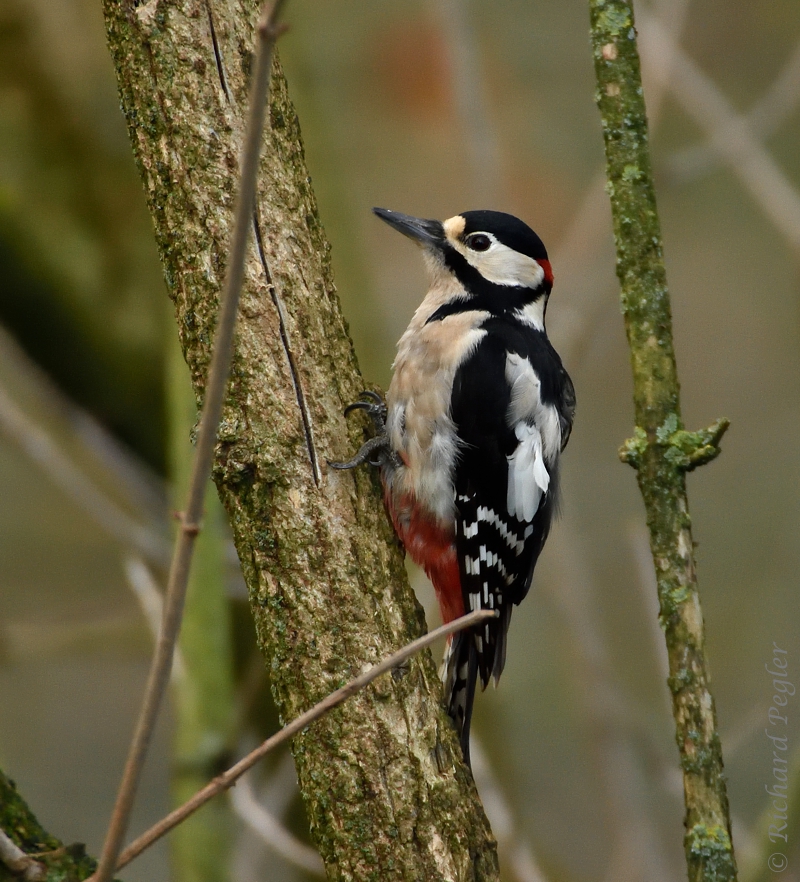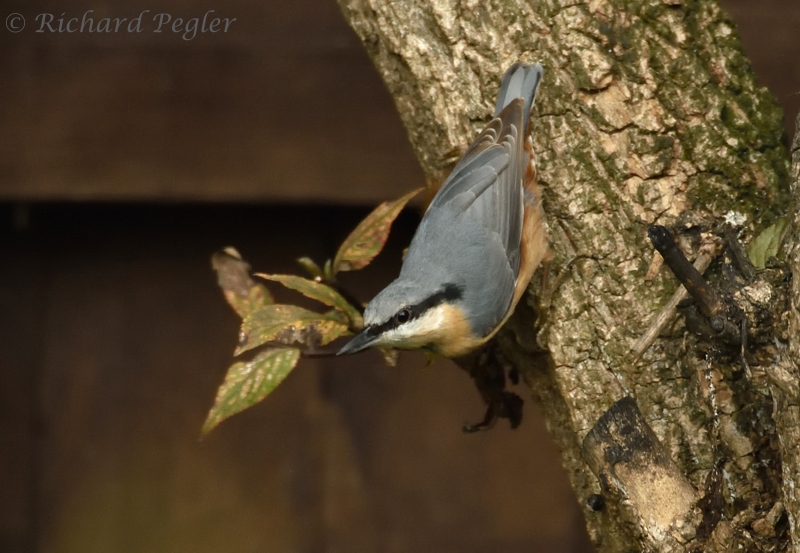At the end of October I came to the sad realisation that I'd not been out for an excusion into nature with my camera since my return from the Isles of Scilly on 3rd October. The reasons for this were several, including processing hundreds of photos from the Scillies visit, maintenance jobs in the home and garden, and a seemingly endless chain of health related visits for both myself and Lindsay. The wet and windy weather did not help either, although the rain was much-needed after the dry summer.
Nevertheless, my camera was not totally idle during this time as I managed to get a few shots of visitors to the garden. We have started to some some of our much-loved winter visitors returning, and I am looking forward to more of them appearing with, hopefully, som better photo opportunities.
This post, therefore, will illustrate some of the highlights and some of the regular visitors to the garden in the month of October. The month started fairly slowly but bird sightings started to get more interesting as the month progressed.
Sunday, 9th October
Only twelve species of bird put a foot down in the garden this day (I don't record fly-overs) and there was nothing out of the ordinary so all I have to offer is a Blue Tit shot, taken whilst sitting at the desk in my study.
 |
Blue Tit (Cyanistes caeruleus) - garden on 9th October, 2022
|
Monday, 10th OctoberThe week got off to a grand start with our first sighting of Brambling for the autumn period. We see Bramblings occasionally in the garden most winters, usually between December and March, and this was the earliest date we have seen one on. I don't like showing photos of birds on feeders, but there will be a few exceptions to this ideal in this post as in some cases those are the only shots I got and I feel that they should appear 'for the record' - this was one of those occasions.
 |
Brambling (Fringilla montifringilla) (male) - garden on 10th October, 2022
|
Sunday, 16th OctoberNuthatch rarely visits our garden, so I was delighted to see one this day. It took me a while to make my mind up as to whether to include the second shot below because of the soft focus and blurred movement, but decided to do so on the basis that, for me, it captures the zooming nature of this bird when it's not bumbling up and down a tree trunk.
 |
Nuthatch (Sitta europaea) - garden on 16th October, 2022
|
Tuesday, 18th OctoberUp until the middle of October, we had gone a quite long while without being visited by a Sparrowhawk, but we were now starting to think that one was making a nuisance of itself in the garden. On this day, a male Sparrowhawk arrived and landed on one of the feeder trays (sorry - another shot of a bird on a feeder!).
 |
| Sparrowhawk (Accipiter nisus) (male) - garden on 18th October, 2022 |
Wednesday, 19th October
For us, this was an utterly remarkable day in that we had a pair of Nuthatch visit. I don't recall this ever happening before in our garden. This did give me some photo opportunities. The third image is in there because photos of Nuthatch seem to rarely capture that wonderful spotting on their backsides. I may have gone a bit overboard with the Nuthatch images, but I feel that I want to show just how versatile they are with their ability to travel in any direction on a tree trunk.
 |
| Nuthatch (Sitta europaea) - garden on 1th October, 2022 |
We have not seen a Nuthatch since this day.
Saturday, 22nd October
A male Blackcap visited this day - our first for the autumn, and another bird that does not usually show up until December or January, with the earliest previous garden sighting being 22nd November in 2020. Sadly, I did not manage any photos of it.
In recent years, we have had one particular fungus grow in our lawn which I find to be rather attractive. This year it has been more abundant than in past years. I am relatively confident that this is Oily Waxcap.
 |
Oily Waxcap (Hygrocybe quieta) - garden on 22nd October, 2022
|
Monday, 24th October
Earlier in the year, we had been seeing Bullfinch on a daily basis but, in the past few months, we'd not seen one, so the appearance of a female Bullfinch on this day was most welcome. The same can be said for Stock Dove which, again, appeared for the first time in a long while on this day. I only got very poor shots of the Bullfinch, and none of the Stock Dove
The moth trap went out this night, for the first time in over two months. It was a slim catch of 13 moths of 9 species, with nothing particularly exciting in the catch, although Red-green Carpet was a first for the garden.
 |
| Juniper Carpet (Thera juniperata) - from garden moth trap on 24th October, 2022 |
 |
| Red-green Carpet (Chloroclysta siterata) - from garden moth trap on 24th October, 2022 |
Wednesday, 26th October
On this day, it was a female Sparrowhawk that caused a stir in the garden.
 |
| Sparrowhawk (Accipiter nisus) (female) - garden on 26th October, 2022 |
Thursday, 27th October
The male Blackcap returned, and this time I did get some photos, although not great.
 |
Blackcap (Sylvia atricapilla) (male) - garden on 27th October, 2022
|
Friday, 28th October
The female Bullfinch was still visiting us on a daily basis, although she was still reluctant to present herself in a photographable position.
 |
| Bullfinch (Pyrrhula pyrrhula) (female) - garden on 28th October, 2022 |
Saturday, 29th October
At this time of year, we tend to get sizeable groups of Starling visiting the garden. Initially it's fun to behold, but they do wear a bit thin after a while as they are very noisy, put off the other birds, and cost us a small fortune in bird food. We are, therefore, usually somewhat relieved when they go off to form into huge murmurating groups elsewhere. We are currently getting groups of around 30-40 birds. Here are a few of them pillaging the suet pellets.
 |
Starling (Sturnus vulgaris) - garden on 29th October, 2022
|
The butterfly season is at a close, so we were surprised to see this Red Admiral on the Pieris this day.
 |
Red Admiral (Vanessa atalanta) - garden on 29th October, 2022
|
I mentioned in a note to friend David in Canada that I was expecting this to be my last sighting of Red Admiral for the year, unless I happened upon a hibernating one (they like to overwinter in outbuildings). However, we had one visit the flowers high up on our Viburnum on 3rd November - sadly, too high up to photograph on that occasion.
This brings me to the end of my account of my October garden observations. I am pleased to report that I did get out with my camera on 4th November - the first time in a month - so I guess that my next blog post will feature that visit and, hopefully, a subsequent one or two?
Thank you for your visit. Please take good care of yourselves and Nature - - - Richard


























































